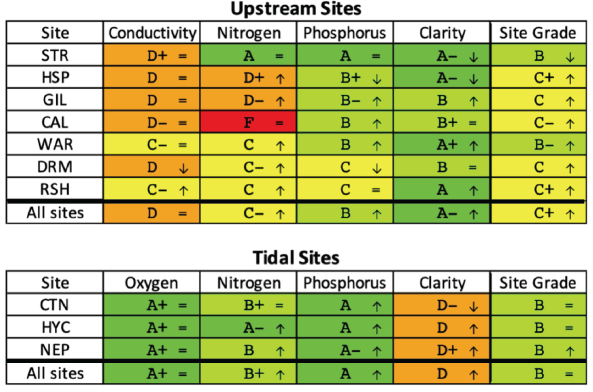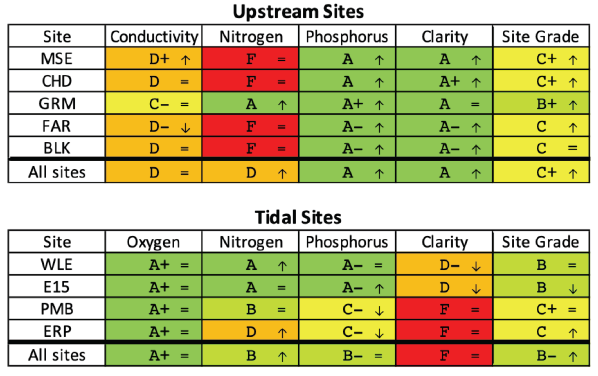How does ENERWA perform water quality sampling?

What do we measure and why is it important?
-
Air and water temperatures
-
pH
-
Total nitrogen
-
Conductivity
-
Total phosphorus
-
Dissolved oxygen
-
Water clarity (turbidity)
Nitrogen, phosphorus, and sediment are the three pollutants addressed by the Chesapeake Bay’s “pollution diet” over- seen by the federal Environmental Protection Agency (EPA). In our measurements, total nitrogen, total phosphorus, and water clarity are the parameters that directly relate to these pollutants. Conductivity is another measure of undesirable solids dissolved in water, and dissolved oxygen tells us how well a waterway can support plant and animal life.
What about bacteria? The Cecil County Health Department monitors the bacterial content of both rivers May-August and posts its results online.
What sites does ENERWA monitor?
The map below shows the sites that ENERWA monitored in 2023: 10 sites in the North East River watershed and 9 sites in the Elk River watershed.

North East River Watershed

Elk River Watershed

How do we calculate the grades?
You can view the raw ENERWA data from each site on the Chesapeake Monitoring Cooperative (CMC) Data Explorer, which is maintained by the Alliance for the Chesapeake Bay. Data from 2024 is already being posted there.
The tables above show the complete scorecards, according to the MTAC protocols, for our 2023 measurements. Dissolved oxygen is not scored for the upstream sites (although it is used as a check) because oxygen is generally good in flowing streams. Conductivity is not scored for tidal sites because it is very sensitive to changes in salinity (salt content).
The changes in the detailed scorings from 2022 to 2023 are indicated by the small marks on the right side of each box in the tables, where ↑ means a better score in 2023, ↓ means worse, and = means the scores for the two years are the same.
As in previous years, most of the upstream sites show high nitrogen content, which can come from agricultural runoff, septic systems, or over fertilized lawns. The nitrogen and phosphorus in the water tends to get diluted in the tidal sites, but these sites show poor water clarity, which can inhibit the growth of underwater grasses that are the basis for a healthy ecosystem.
Many of the 2023 scores were significantly better than those in previous years, but this may be temporary improvement due to the dry conditions in many months last year. Lack of rainfall means less runoff, so that less pollutants are carried into the creeks. Both the Elk and North East watersheds received an overall grade of B- in 2023 up from C in 2022.
